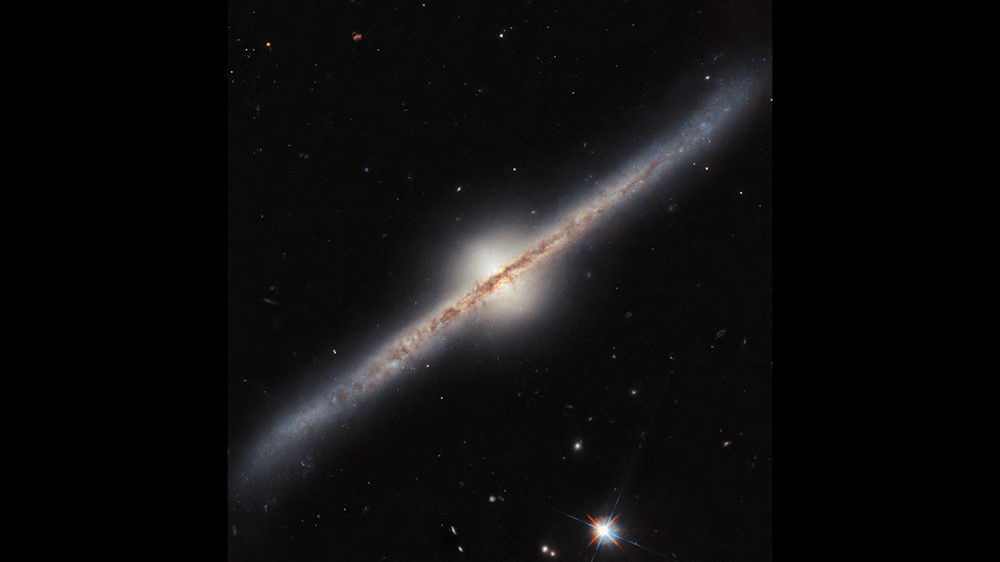Hubble Captures Rare Edge-On View of Spiral Galaxy
It’s indeed stunning. NASA’s Hubble Space Telescope has captured a remarkable image of UGC 10043, a spiral galaxy located approximately 150 million light-years away in the constellation Serpens. This extraordinary photograph offers astronomers a rare edge-on perspective of a spiral galaxy, revealing unique features that are typically hidden from view.
 |
| This NASA/ESA Hubble Space Telescope image features spiral galaxy UGC 10043. Credit: ESA/Hubble & NASA, R. Windhorst, W. Keel |
The edge-on orientation of UGC 10043 presents the galaxy's disk as a sharp line cutting through space, with prominent dust lanes forming thick bands of clouds that obscure much of the galaxy's luminosity. These dust lanes, which would normally outline the spiral arms if viewed from above, create a striking visual effect that has captivated astronomers and space enthusiasts alike.
Galactic Structure Revealed
Despite the obscuring dust, the image unveils several intriguing features of UGC 10043:
- Active Star Formation: Pockets of intense star-forming regions shine through the dark clouds, hinting at the galaxy's ongoing stellar evolution.
- Prominent Bulge: The galaxy's center boasts a glowing, egg-shaped bulge that extends far above and below the disk, a common feature in spiral galaxies that is rarely seen so clearly.
- Warped Disk: Interestingly, the galaxy's disk appears warped, bending upward at one end and downward at the other.
Astronomers speculate that the unusually large size of the central bulge and the warped nature of the disk may be the result of UGC 10043 siphoning material from a nearby dwarf galaxy. This interaction could explain the galaxy's unique shape and structure.
Hubble's Enduring Legacy
The image of UGC 10043 is not just a testament to the galaxy's beauty but also to Hubble's longevity and scientific value. Composed of data collected 23 years apart, in 2000 and 2023, this composite image showcases Hubble's ability to provide consistent, high-quality observations over extended periods. This long-term archive of data continues to grow in value, offering astronomers an unprecedented resource for studying the evolution of celestial objects over time.
As we marvel at this edge-on view of UGC 10043, we are reminded of the vast wonders that exist in our universe and the incredible technology that allows us to explore them from millions of light-years away. The Hubble Space Telescope continues to be a window in
